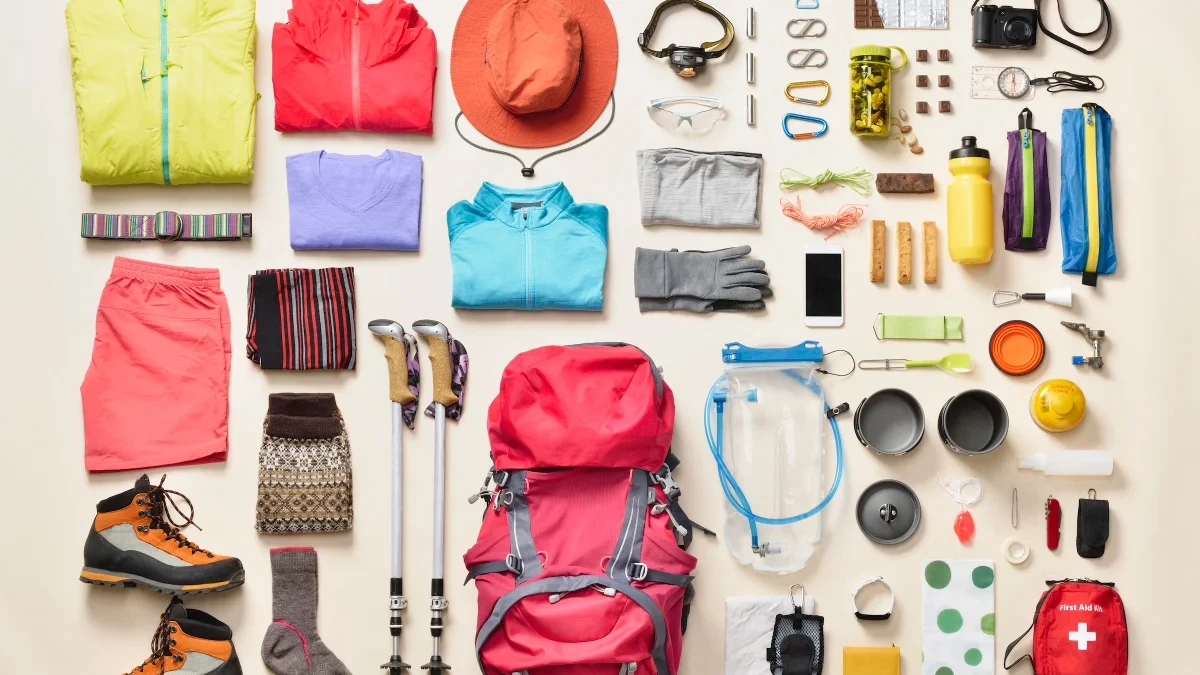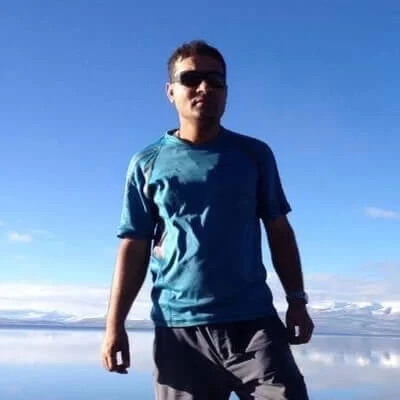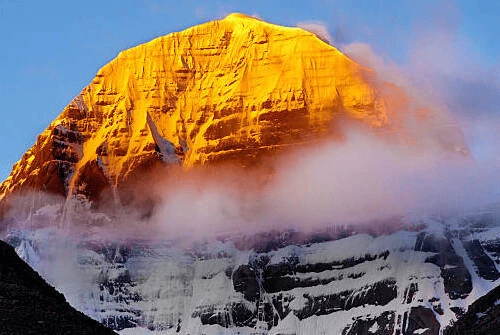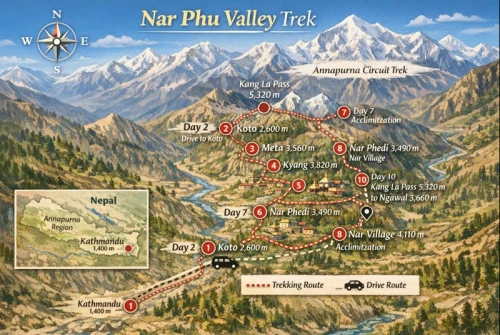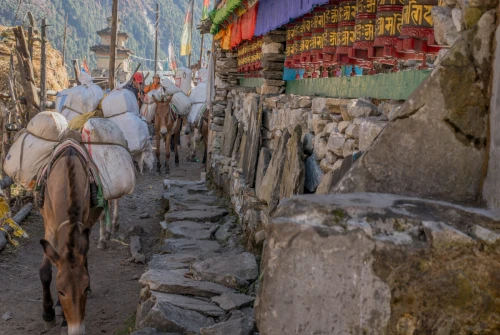Top Trekking Routes in Nepal: Where Are You Headed?
Here’s a breakdown of Nepal’s most popular and scenic treks each with its own terrain, altitude, climate, and gear requirements.
Everest Base CampTrek
Duration: 7–14 days
Maximum Altitude: 5,364m (17,598 ft) at Everest Base Camp
Difficulty: Moderate to challenging
Starting Point: Lukla (via short flight from Kathmandu)
The Everest Base Camp Trek is the ultimate high-altitude trekking experience, attracting adventurers worldwide to witness the awe-inspiring Mount Everest up close. Starting from Lukla, trekkers navigate through picturesque Sherpa villages like Namche Bazaar, explore ancient Buddhist monasteries adorned with colorful prayer flags, and acclimatize in the shadow of Everest’s massive south face. The trek culminates at Everest Base Camp itself, followed by a sunrise hike to Kala Patthar (5,545m) for panoramic views of Everest, Lhotse, Nuptse, and Ama Dablam.
Key Highlights: Stunning Himalayan vistas, Sherpa culture, Buddhist monasteries, Kala Patthar viewpoint.
Challenges: Risk of altitude sickness above 3,500m, cold temperatures (-10°C to -20°C at night), and crowds during peak trekking seasons (spring and autumn).
Best Season: March to May and September to November.
Annapurna Circuit Trek
Duration: 11–18 days
Maximum Altitude: 5,416m (17,769 ft) at Thorong La Pass
Difficulty: Moderate to challenging
Starting Point: Besisahar or Chame
The Annapurna Circuit Trek is renowned for its diverse landscapes, ranging from lush subtropical forests and terraced rice paddies to arid alpine deserts and towering snow-capped peaks. Trekkers cross the iconic Thorong La Pass (5,416m), one of the highest trekking passes in the world, offering unparalleled views of the Annapurna massif and Dhaulagiri range. Along the way, you’ll encounter unique cultures, including the Thakali and Tibetan-influenced communities, and relax in welcoming teahouses.
Key Highlights: Thorong La Pass, diverse ecosystems, Annapurna and Dhaulagiri mountain views, Thakali culture.
Challenges: Long trekking days, altitude gain, variable weather conditions, occasional landslides during monsoon.
Best Season: October to December and March to May.
Langtang Valley Trek
Duration: 7–10 days
Maximum Altitude: 4,984m (16,355 ft) at Tserko Ri
Difficulty: Moderate
Starting Point: Syabrubesi
The Langtang Valley Trek is a serene alternative to the busier Everest and Annapurna routes, offering peaceful trails and lush forested valleys just a few hours from Kathmandu. The trek passes through traditional Tamang villages, ancient Buddhist monasteries, and rhododendron forests, with views of the Langtang Lirung peak and surrounding glaciers. It is a perfect choice for trekkers looking for a moderate, less-crowded high-altitude experience.
Key Highlights: Pristine valley, Tamang culture, Langtang Lirung, glaciers, Buddhist monasteries.
Challenges: Limited teahouse facilities in some areas, unpredictable weather in monsoon season.
Best Season: September to November and March to May.
Manaslu Circuit Trek
Duration: 13–15 days
Maximum Altitude: 5,160m (16,929 ft) at Larkya La Pass
Difficulty: Challenging
Starting Point: Soti Khola or Arughat
The Manaslu Circuit Trek is a remote and adventurous route circling Mount Manaslu, the world’s eighth highest peak. This trek offers rugged trails, fewer tourists, and a deep cultural immersion in authentic Himalayan villages with Tibetan Buddhist influences. Trekkers face the demanding Larkya La Pass at 5,160m, which requires good acclimatization and fitness. Due to its status as a restricted area, trekkers need special permits to explore this stunning but less commercialized region.
Key Highlights: Mount Manaslu, remote Himalayan villages, Tibetan culture, Larkya La Pass.
Challenges: Limited infrastructure, basic teahouse accommodations, permit requirements, and challenging terrain.
Best Season: September to November and March to May.
Upper Mustang Trek
Duration: 12–17 days
Maximum Altitude: Approx. 4,200m (13,780 ft)
Difficulty: Moderate
Starting Point: Jomsom or Pokhara
The Upper Mustang Trek is a journey into the “Last Forbidden Kingdom” of Nepal, a restricted trans-Himalayan region rich with ancient Tibetan culture, arid desert landscapes, and medieval walled cities like Lo Manthang. The dry climate and moderate altitude make it a unique trekking experience with dramatically different terrain compared to other Himalayan treks. Due to its protected status, trekking here requires special permits and adherence to strict regulations.
Key Highlights: Tibetan culture, Lo Manthang walled city, desert landscapes, ancient cave dwellings.
Challenges: High permit costs, restricted access, limited facilities.
Best Season: March to May and September to November.
Ghorepani Poon Hill Trek
Duration: 2–5 days
Maximum Altitude: 3,210m (10,531 ft) at Poon Hill
Difficulty: Easy to moderate
Starting Point: Nayapul or Pokhara
The Ghorepani Poon Hill Trek is ideal for beginners or travelers short on time who still want stunning Himalayan scenery. It is one of Nepal’s most popular short treks, offering spectacular sunrise views over Annapurna and Dhaulagiri peaks from Poon Hill. The trail passes through vibrant Gurung villages and comfortable teahouses, making it a great introduction to Nepal’s trekking culture and landscapes without the challenges of extreme altitude.
Key Highlights: Poon Hill sunrise, Annapurna and Dhaulagiri views, Gurung villages, teahouse trekking.
Challenges: Short duration, mild altitude but can still cause mild acclimatization issues.
Best Season: March to May and September to November.
Mardi Himal Trek
Duration: 4–9 days
Maximum Altitude: Approx. 4,500m (14,764 ft)
Difficulty: Moderate
Starting Point: Pokhara
The Mardi Himal Trek is a relatively new and less crowded route that appeals to trekkers seeking off-the-beaten-path adventures with close-up views of Machhapuchhre (Fishtail) and other Annapurna peaks. The trek winds through dense forests, ridges, and small villages before opening up to spectacular alpine scenery. Its moderate altitude and well-maintained trails make it a favorite for those looking for solitude without extreme difficulty.
Key Highlights: Machhapuchhre views, alpine forest trails, less crowded routes, pristine nature.
Challenges: Limited teahouse options near the summit, unpredictable mountain weather.
Best Season: March to June and September to November.
Kanchenjunga Base Camp Trek
Duration: 20+ days
Maximum Altitude: 5,143m (16,883 ft) at Kanchenjunga Base Camp
Difficulty: Very challenging
Starting Point: Taplejung or Suketar
The Kanchenjunga Base Camp Trek is one of Nepal’s most remote and difficult treks, taking you to the foot of the world’s third-highest mountain, Kanchenjunga (8,586m). This trek crosses wild and pristine eastern Himalayan wilderness, with diverse flora and fauna, minimal infrastructure, and deep cultural encounters with Limbu and Rai communities. It is best suited for highly experienced trekkers seeking solitude, rugged terrain, and a genuine sense of Himalayan adventure.
Key Highlights: Kanchenjunga peak views, remote wilderness, ethnic village cultures, high-altitude challenge.
Challenges: Lengthy duration, very difficult terrain, limited facilities, permit requirements.
Best Season: April to June and September to October.
The High-Altitude Trekking Packing Checklist
Clothing: Smart Layering is Survival
The goal is to layer for insulation and adaptability. Mountain weather changes rapidly sunny mornings can turn into snowy afternoons.
Base Layers (Next to Skin)
Mid Layers (Insulation)
Outer Layers (Protection)
Extras
2–3 pairs of trekking pants
Warm hat, sun hat, and buff/scarf
Lightweight gloves + insulated gloves
Sports bras and underwear (quick-dry)
Footwear: Comfort Over Style
High-ankle waterproof hiking boots (broken in)
Camp shoes or sandals
3–4 pairs of trekking socks (synthetic or wool blend)
1–2 pairs of thick wool socks for sleeping
Essential Gear
Backpack (45–65L) with rain cover
Sleeping bag (comfort rated -20°C or lower)
Daypack (if hiring a porter)
Trekking poles
Water bottles and/or hydration bladder (2–3L total)
Water purification tablets or filter
Headlamp + spare batteries
Sunglasses (UV-protective, glacier-rated if needed)
Lightweight towel
Toiletries & Personal Items
Toothbrush & toothpaste
Biodegradable soap & shampoo
Quick-dry towel
Sunscreen (SPF 50+)
Lip balm with SPF
Hand sanitizer & wet wipes
Toilet paper & zip bag for used TP
Feminine hygiene products
First Aid & Medical Kit
Personal medication (plus extra for delays)
Diamox (consult your doctor for altitude sickness)
Painkillers (ibuprofen, paracetamol)
Rehydration salts
Antiseptic cream & bandage
Blister plasters (e.g. Compeed)
Tweezers, scissors, medical tape
Snacks & Extras
Energy bars, nuts, dried fruit, chocolate
Electrolyte drink mix
Journal & pen
Book or Kindle
Power bank (10,000mAh+)
Travel adapter for Nepal (Type C, D, and M)
Expert Packing Tips for Nepal Treks
Keep your total pack weight under 12 kg
Test all gear before your trek — especially boots & backpack
Carry enough cash in NPR (ATMs are rare on trails)
Bring a camera or smartphone with spare storage
Make copies of permits, insurance, and passport
Get travel insurance that covers heli-evacuation and high altitude
Always treat your water — even from teahouses
Listen to your body: descend if altitude symptoms worsen
Seasonal Packing Tips (When Are You Trekking?)
Different seasons demand different gear:
Spring (Mar–May): Warm days, cool nights — expect blooming rhododendrons and mild conditions.
Autumn (Sep–Nov): Clear skies, best mountain views, but colder temperatures.
Winter (Dec–Feb): Extremely cold at high altitudes — heavy down gear needed.
Monsoon (Jun–Aug): Wet, muddy trails and leeches — avoid trekking in rain-shadow areas like Upper Mustang.
Altitude Sickness Awareness
Altitude sickness awareness is crucial for trekkers ascending above 3,000 meters, as Acute Mountain Sickness (AMS) can affect anyone at high altitudes. Common symptoms of AMS include headache, nausea, dizziness, and fatigue, which can quickly worsen if ignored. To prevent altitude sickness, it’s important to ascend gradually, ideally no more than 300 to 500 meters per day and to take proper acclimatization rest days along the trek. Staying well-hydrated and avoiding alcohol are also key preventive measures. In some cases, doctors may recommend medications like Diamox (acetazolamide) to help reduce symptoms and improve acclimatization. Understanding altitude sickness, its symptoms, and prevention techniques not only ensures safer trekking experiences in Nepal but also establishes your blog as a responsible, expert resource for high-altitude trekking advice.
Teahouse vs Camping Treks – What to Expect
When trekking in Nepal, your packing list will vary significantly depending on whether you choose a teahouse trek or a camping trek. Most popular trekking routes like Everest Base Camp, Annapurna Circuit, and Langtang Valley are teahouse treks, where comfortable lodges provide meals, bedding, and basic amenities, allowing you to pack lighter and leave bulky camping gear behind. In contrast, remote and less frequented regions such as Kanchenjunga or the Manaslu Circuit often require camping treks, where you must carry or arrange tents, cooking equipment, food supplies, and sometimes even fuel, adding to your gear weight and complexity. When preparing for a teahouse trek, focus on daypack essentials like warm layers, rain gear, and personal items, while for camping treks, include a high-quality sleeping bag, portable stove, cookware, and sufficient food. Understanding the differences between teahouse and camping trekking styles helps you pack efficiently and ensures a safe and comfortable journey through
Top 10 FAQs About Trekking in Nepal
Can I rent trekking gear in Nepal?
Yes, trekking gear such as down jackets, sleeping bags, trekking poles, and boots can be rented in major cities like Kathmandu and Pokhara, making it convenient and cost-effective for travelers who want to avoid carrying bulky equipment.
Do I need a guide or porter for trekking in Nepal?
While independent trekking is possible on many popular routes, hiring a guide or porter is highly recommended for safety, navigation, and supporting local communities. Guides offer valuable cultural insights and help manage altitude sickness risks, while porters ease the burden of heavy backpacks.
How cold does it get on Everest Base Camp ?
Temperatures at Everest Base Camp can drop below -20°C (-4°F) during the night, especially in winter and early spring. Proper layering and insulated gear are essential to stay warm in these freezing high-altitude conditions.
Is Wi-Fi or charging available on the trail?
Wi-Fi and charging facilities are generally available at most teahouses along popular trekking routes like EBC and Annapurna Circuit, usually for a small fee. However, connectivity is limited and unreliable in remote areas, so prepare to disconnect and bring portable power banks.
What permits do I need for trekking in Nepal?
Most treks require a TIMS card (Trekkers’ Information Management System) and specific permits like the Sagarmatha National Park Permit for Everest, ACAP for Annapurna, or restricted area permits for regions like Upper Mustang and Manaslu.
How do I prevent altitude sickness during trekking?
Prevent altitude sickness by ascending gradually, taking rest days for acclimatization, staying hydrated, avoiding alcohol, and recognizing early symptoms like headache and nausea. Medications like Diamox can be used under medical supervision.
When is the best time to trek in Nepal?
The most popular trekking seasons are spring (March to May) and autumn (September to November) when the weather is stable, skies are clear, and temperatures are moderate. Monsoon season (June to August) is wet and slippery, while winter (December to February) is cold but less crowded.
Can I trek without prior experience?
Many trekking routes in Nepal, such as the Ghorepani Poon Hill Trek or Langtang Valley Trek, are suitable for beginners with moderate fitness. However, more challenging treks like Everest Base Camp or Manaslu Circuit require good physical conditioning and acclimatization.
Are there health facilities available on the trekking routes?
Basic medical clinics and first aid posts are available in larger villages along major trails. However, emergency evacuation services are limited, so trekkers should carry a well-stocked first aid kit and consider travel insurance that covers high-altitude trekking.
What is the local culture like on Nepal trekking routes?
Nepal’s trekking trails pass through diverse ethnic communities such as Sherpas in Everest, Gurungs in Annapurna, and Tamangs in Langtang, offering rich cultural experiences including traditional festivals, local cuisine, and warm hospitality.
Final Thoughts
Nepal’s Himalayas are both inspiring and unforgiving, and proper preparation is what separates a dream trek from a difficult experience. By packing smart, respecting the fragile mountain environment, and honoring local cultures, you set yourself up for a meaningful and unforgettable adventure. No matter which trail you choose whether it’s the iconic Everest Base Camp, the challenging Annapurna Circuit, or a hidden gem like the Langtang Valley you will leave Nepal with more than just photographs. You will carry memories of limitless skies, timeless villages, and personal transformation that only the majestic mountains can offer.
If you need a packing list tailored to your specific trek, simply share your route, the time of year, or your trekking experience level, and I will help you customize your gear and plan smarter for the ultimate Nepal trekking experience.
